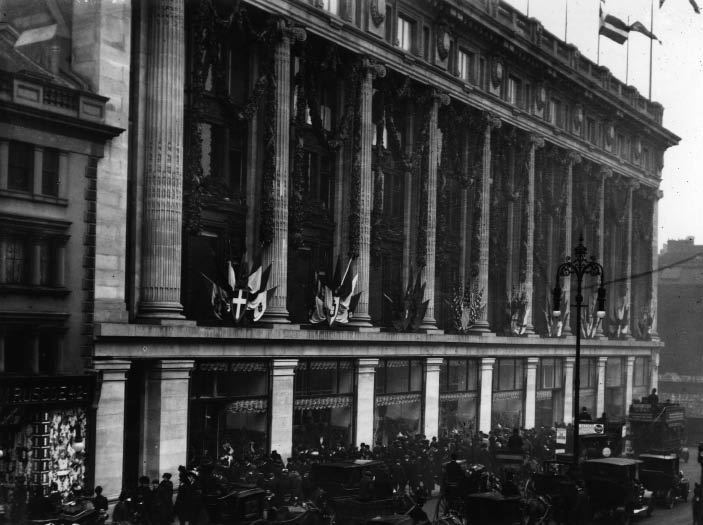Laura Staples recalls the American-born retailer whose great Oxford Street emporium revolutionised British shopping habits — and is holding out against recession today
Laura Staples recalls the American-born retailer whose great Oxford Street emporium revolutionised British shopping habits — and is holding out against recession today
One hundred years ago this week, Harry Gordon Selfridge threw open the doors of his famous Oxford Street store. After an early career with what became the Marshall Field department store company in Chicago, he was keen to build an emporium of his own. In doing so, he revolutionised British shopping and helped create the modern consumer society.
Selfridge wanted more than just a big shop. He targeted female customers, recognising the huge spending potential of newly empowered Edwardian women. Selfridges would provide the ladies of the day with all their household needs, plus a chance to indulge themselves at the same time. He stocked all the latest fashions and technological marvels. He opened restaurants and cafés. His store became a tourist attraction: its pioneering steel frame supported vast plate-glass windows, each one elaborately dressed. Window-shopping became the new metropolitan pastime.
A century on, Selfridges’ distinctive architecture and bright yellow shopping bags make it one of the most recognisable shops in the world and the spirit of the founder lives on. But this hasn’t always been the case. What you see today is the result of nearly 20 years’ hard work to recapture the original magic.
In the early 1990s, the store had lost its sense of direction, selling a bit of everything, with too much focus on private labels. It was owned by Sears, a vast retail conglomerate, and Selfridges’ chief executive Tim Daniels and finance director Peter Williams were frustrated. When he joined in 1991, Williams was struck by how little the owners had spent on the store.








Comments
Join the debate for just £1 a month
Be part of the conversation with other Spectator readers by getting your first three months for £3.
UNLOCK ACCESS Just £1 a monthAlready a subscriber? Log in